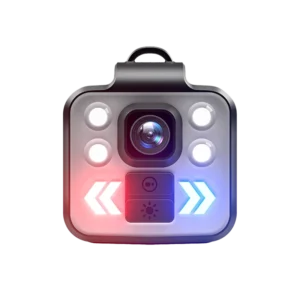The smart helmet is a safety device that integrates multiple advanced technologies and functions, aiming to provide users with all-round safety protection.
As we all know, safety helmets are the “life shield” for construction workers on construction sites and play a key role in ensuring construction safety. When worn on the heads of construction workers, in addition to protecting against the sun and rain, they can also effectively block direct impacts from heavy objects, disperse impact force, reduce the degree of damage to the head, and provide electrical insulation.
The main functions of smart helmets
- Real-time communication and monitoring: The smart helmet is equipped with a high-definition camera and a voice intercom system, enabling users to make real-time video calls and monitor the situation at the work site. This helps to coordinate and direct work and improve work efficiency.
- Personnel positioning and track playback: Through GPS or other satellite navigation systems, the smart helmet is able to locate the user’s position in real time, which facilitates monitoring and scheduling by management personnel. * Trajectory playback function can record the user’s movement trajectory, which is convenient for tracing the operation history process.
- Safety Warning and Alarm: The smart helmet is equipped with a variety of sensors, such as gyroscopes, height sensors, hat removal sensors, etc., which are capable of real-time monitoring of the user’s behavior and status. Once abnormalities are found, such as falling, impact, and hood removal, an alarm will be triggered immediately to remind users and managers to pay attention to safety. * Near-electricity sensing function, on the other hand, can issue an early warning when the user is close to high-voltage electrical equipment, avoiding the danger of electrocution.
- Vital Signs Monitoring: Some smart helmets are also equipped with vital signs monitoring devices such as heart rate sensors, which can monitor the user’s heart rate and blood oxygen saturation and other physiological indicators in real time to ensure the user’s physical health during high-intensity labor.
- Electronic fence and area management: Setting up the electronic fence of the work site area through the system platform, when the user wearing the smart helmet is close to the area of the electronic fence, it will trigger the alarm, and the helmet will broadcast the voice warning message, effectively avoiding the occurrence of safety accidents.
- Other Customized Functions: According to user requirements, the smart helmet can also provide other customized functions, such as infrared thermal imaging, platform private deployment, etc.. These functions can further expand the application scenarios and practicality of the smart helmet.
The core benefit of smart helmets is their enhanced safety features. With built-in sensors, these helmets can detect crashes and immediately alert emergency contacts with the rider’s location and status. This rapid response can be crucial in preventing severe injuries or even saving lives.
More details about smart helmets
What material is smart helmet?
The intelligent helmet is made out of durable materials, such as enduring carbon fibers, Kevlar, and dependable glass fibers. According to different usage scenarios, designers will design smart helmets with different materials.
What are the benefits of smart helmets for coal miners?
With the help of Beidou/GPS positioning system, smart helmets can locate the wearer. In coal mines, managers can grasp the distribution of miners in real time. Once an emergency occurs, they can quickly determine the rescue direction and improve rescue efficiency. During railway inspections, the dispatching center can clearly understand the location of inspectors and arrange inspection tasks reasonably to ensure that there are no omissions along the railway.
How can smart helmets help people reduce danger?
The front of the helmet is equipped with a high-definition camera that supports zoom and video behavior analysis. It can shoot on-site videos and transmit them back to the command center in real time. At various emergency command sites, such as fire rescue and earthquake rescue, the rear command personnel can intuitively understand the on-site conditions through the video, which is conducive to the management of supervisors.




